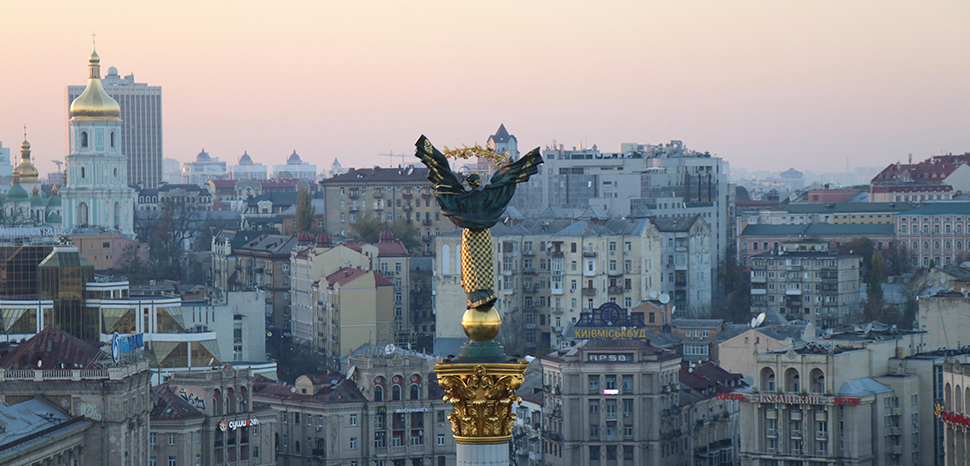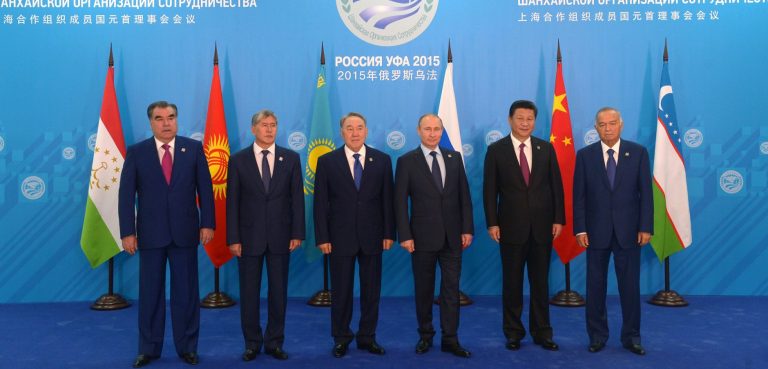This October we mark 31 years since the dramatic protest action in Ukraine dubbed the Revolution on Granite, a historic event little known to the international community. It took place on the cold granite slabs of the famous Maidan in Ukraine’s capital Kyiv from October 2-18 in 1990. Arguably it triggered the chain of events that eventually led to Ukraine’s independence from the USSR the next year. This dramatic episode embodied the culminating point of the democratisation processes during the Soviet Perestroika (restructuring), which Soviet leader Michail Gorbachev had initiated a few years earlier. Gorbachev attempted to modernise the Soviet Communist system to overcome persistent economic stagnation and accelerate its economic development to successfully compete with the capitalist West. As a result, the grip of Soviet totalitarianism eased, which allowed the emergence of numerous grassroot ‘initiatives from below.’ Despite its limitations, Gorbachov’s politics of Glasnost (openness, relative freedom of press) played a significant role in awakening the masses’ consciousness and further democratising Soviet society. Through press, literature, TV, radio and cinema, Glasnost gave people the opportunity to figure out the truth about the systemic ills and enormous crimes of the Communist system in the past. The Soviet people suddenly learned about the mass repressions and large-scale killings of political opposition, Holodomor (killing by hunger) of millions of innocent citizens in Ukraine, the very high costs of industrialisation, inefficiencies of the planned economy and so forth. Quite swiftly, the ideological myths of the Soviet regime were destroyed, the theoretical dogmas of Marxism-Leninism were debunked, and the futility of the communist experiment in the USSR was revealed. That resulted in the unintended consequences of the reforms. The events quickly began to develop according to their own logic, ignoring the directives of the Soviet leadership. Within just a few years, Perestroika, which was intended to refurbish the Communist system, transformed into an anti-communist, anti-imperialist and democratic revolution, similar to the ‘velvet’ revolutions that simultaneously took place in other Communist countries in Eastern and Southern Europe. In the context of Perestroika, the Revolution on Granite was arguably the climax point of the political development in Ukraine. Since 1988, the sociopolitical activity of people in Ukraine significantly intensified as more and more people lost the fear of repressions and demanded radical changes in the country. Numerous rallies, pickets, strikes, and other acts of civil disobedience took place in all regions of Ukraine. During this time, an essential part of the bottom-up activism in Ukraine was formed by the wave of a cultural and national-democratic revival when numerous civic associations emerged. It mainly was initiated and led by Ukraine’s cultural intelligentsia and former dissidents recently released from prison and exile. A substantial part of Ukraine’s democratic revival was formed by the student movement.
Soon after the monopoly of the Communist Party was abolished, a new multipolar political landscape emerged. In March 1990, relatively free multiparty elections to the parliament were held for the first time in Ukraine. The Communists gained two thirds of the seats. At the same time, the remaining one third was filled by representatives of the national-democratic organisations. However, almost immediately, the noticeable difference in the perception of the political situation between the older generation and the student youth emerged. Idealist and maximalist young people believed that after having won several dozen seats in parliament, the national democrats imagined themselves as victors, became too conformist, and undermined the moment’s potential for further democratic progress in Ukraine. Thus, on October 2, 1990, the Kyiv’s Student Union of Ukraine and the Lviv’s Student Brotherhood students started a hunger strike in Kyiv, demanding more radical democratic reforms. About forty activists spread their mattresses on the square now known as the Maidan, declaring the area a ‘communism-free zone’, and setting up tents. The hunger strikers put forward the following demands: 1) dissolve the parliament and call snap elections on a multiparty basis within a year; 2) nationalize the property of Ukraine’s Communist Party and Komsomol; 3) refuse to sign any form of a new Union Treaty; 4) stop deploying young men serving a compulsory military service outside of Ukraine; and 5) the resignation of Prime Minister Ukraine Vitaliy Masol.
The Revolution on Granite had begun; and the authorities seemed choked by this unexpected, swift and well-organized student action, initially pretending not to notice it. There was also an information blockade imposed by the official mass media. Only international media immediately reported on the movement. When the information became widely known, the authorities did not dare use force to clamp down. After just two days, there were about 50 tents, with about 150 people taking part in the hunger strike and another 130 providing various services for them such as medical, security or public relations. After the negotiations with the authorities failed to reach an agreement in a week, the students began to scale up the protest. They started going to universities and factories in Kyiv and other major cities, calling people to the actions of mass civil disobedience. Between 10-15 October, the protests escalated further, resulting in mass rallies, blockages of the central streets and the main TV and radio studios. Students in Kyiv’s universities, colleges and schools began a general student strike.
On October 15, about one hundred thousand students took to the streets marching toward the Verkhovna Rada. They broke through the police cordon and set up a second tent camp on the square in front of the parliament. A few thousand students also marched on Kyiv University and the Polytechnical University buildings, and occupied them. The authorities were made to agree to provide the student representatives with a live broadcast on national TV, in which they explained and gave reasons for their demands. They also called for an all-Ukraine strike. As a result, the protest almost immediately turned into a nationalist movement. Student strikes and rallies took place almost all over the country. Workers in many factories declared a pre-strike state of readiness to resort to it if student demands were not met. It was a turning point, as seemingly the authorities had realized that there were not just students but also ordinary people against them. Even the militsiya (police) did not manifest any notable resistance to the protesters. The authorities seemed to realize that if the crisis continued, it might wipe them out of power. On October 17, the parliament adopted the resolution, which mostly satisfied the students’ demands.
On October 18, 1990, the leaders of the protest Oles Doniy and Markiyan Ivashchyshyn, announced on television the end of the hunger strike, and the release of the occupied university buildings. The tent camp was dismantled. The Revolution on Granite officially was over. It was the first protest action of such scale and significance in Ukraine before independence, and without it, it is unlikely that there would be an independent Ukraine. The Revolution on Granite accelerated the collapse of the communist regime and triggered the processes which eventually led to the country’s independence a year later.
The views expressed in this article are those of the authors alone and do not necessarily reflect those of Geopoliticalmonitor.com




